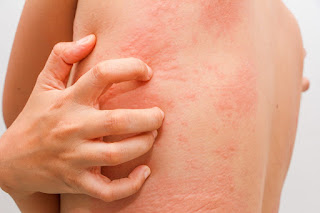How to treat the bubonic plague and how you get it in the first place - Insider
The bubonic plague is a deadly bacterial infection, caused by Yersinia pestis. In the 14th century, before treatment was available, bubonic plague killed 50 million people in Europe and became known as the "Black Death."
But in modern times, bubonic plague is rare affecting between 1 and 17 people per year in the United States.
Bubonic plague is still deadly if not treated, so it's important to seek medical aid immediately if you think you have it. Here's what you need to know about how to treat and prevent bubonic plague.
How do you get bubonic plague?
The bubonic plague has a frightening history, but there is little risk of it becoming a global threat, says Michael Head, PhD, a senior research fellow in Global Health at the University of Southampton. "There are a few hundred cases of plague globally each year, so the disease itself is relatively rare."
It is found mainly in Africa, Asia, and South America. Countries with the most number of cases are usually Democratic Republic of Congo, Peru, and Madagascar. There are also occasional plague cases in the western United States mostly in two areas: the Southwest four corners region and the Northwest in California and Oregon.
One reason bubonic plague is uncommon is that it is rarely transmitted between people. It's possible to pass it on through a cough, but the most common way to catch plague is through a bite from an infected flea or animal.
How does the bubonic plague affect your body?
Bubonic plague targets your lymph nodes, which are located throughout your body. They are round clusters of immune cells that fight off invading microbes.
When plague bacteria enter your system, they multiply inside the closest lymph node. This can cause swollen, painful lymph nodes, most often found in your groin, neck, or armpit. If you aren't treated for bubonic plague, the infection can spread through your whole body.
In addition to swollen lymph nodes, other symptoms of bubonic plague include:
- Fever that comes on suddenly
- Chills
- Headache
- Weakness
- Nausea and vomiting
If you catch bubonic plague, symptoms will take between one to seven days to show up after you are exposed. Symptoms will usually worsen rapidly, which is why it's important to seek treatment immediately.
Other forms of plague
Depending on where the Y. pestis bacteria spreads in your body, you can develop two additional forms of plague:
- Pneumonic plague occurs when Y. pestis spreads to your lungs. This condition is extremely dangerous and infected people can die within 18-24 hours of being exposed to the bacteria if they are not quickly treated with antibiotics.
- Septicemic plague is caused by plague bacteria spreading through your bloodstream. This form of plague can cause other troubling symptoms — your skin and other tissue can turn black and die, particularly on your nose, fingers, and toes. You may also bleed out of your mouth, nose, or anus.
Treatment and prevention of the bubonic plague
To diagnose bubonic plague, your doctor will test your blood, mucus, or pus from swollen lymph nodes to look for the Y. pestis bacteria.
If you test positive for bubonic plague, "immediate treatment is essential," Head says.
"If untreated, bubonic plague has a mortality rate of around 50%," Head says. If you get treated with antibiotics , the death rate drops to about 11%.
Doctors will usually give antibiotics like streptomycin, gentamicin, doxycycline, or ciprofloxacin to treat bubonic plague. You may also need to get intravenous fluids and oxygen to help your body through the treatment process.
If you are traveling to a region with a higher plague risk, it may help to take precautions against flea bites. Wear long-sleeve shirts and pants to protect your skin and use a DEET-based bug spray to repel fleas. You should also stay away from any animals you suspect may have fleas.
The bottom line
Most people have a very low risk of getting bubonic plague. If you are visiting a country known to have above-average cases of bubonic plague, make sure you are aware of plague signs and symptoms. If you think you may have bubonic plague, get medical help immediately.

Comments
Post a Comment